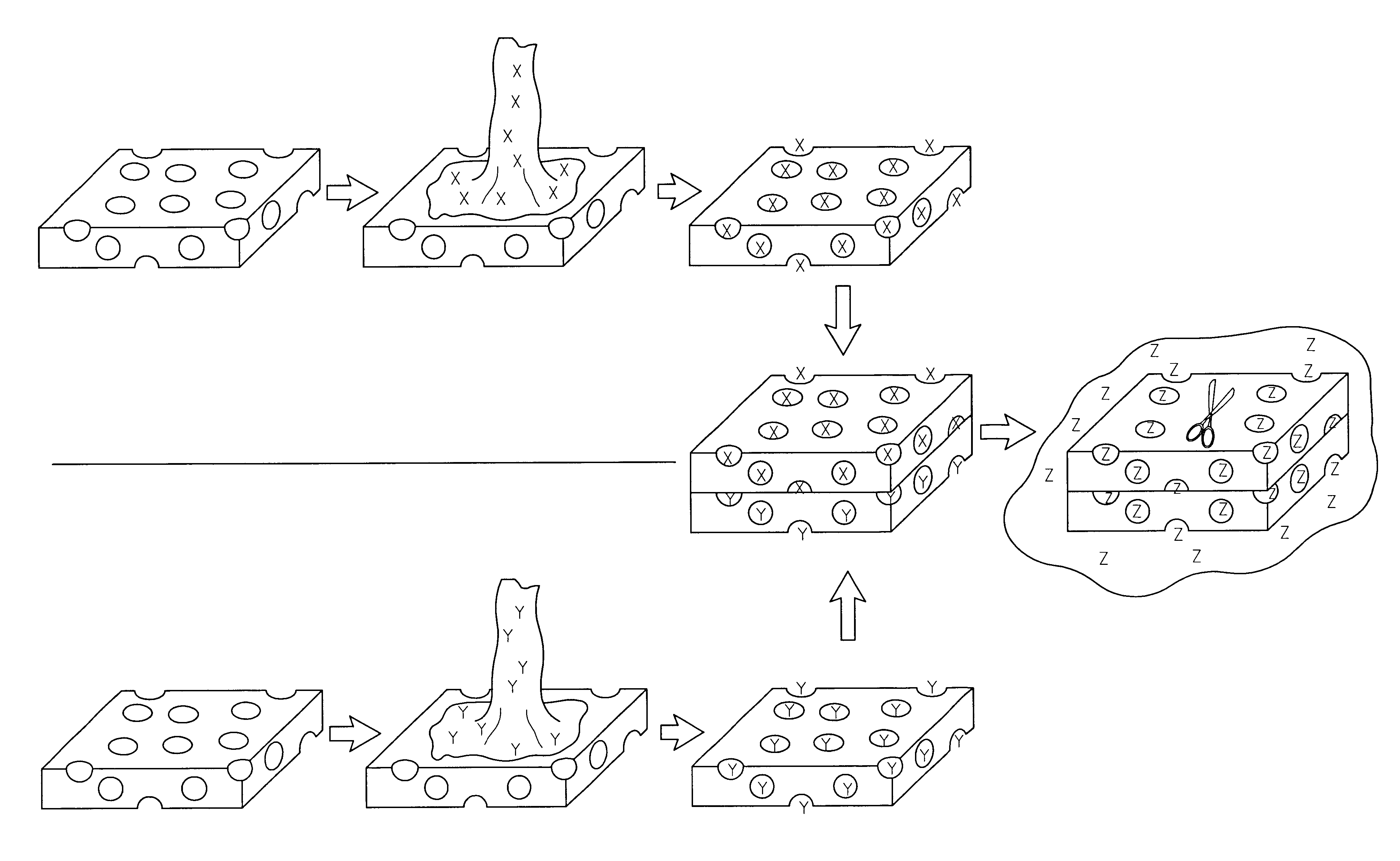Paper product impregnated with chemical material
a technology of chemical materials and paper products, applied in the direction of halogen oxides/oxyacids, non-fibrous pulp addition, biocidal agent addition, etc., can solve problems such as health hazards
- Summary
- Abstract
- Description
- Claims
- Application Information
AI Technical Summary
Problems solved by technology
Method used
Image
Examples
example number 2
A second zone of inhibition test was next performed to test the ability of the samples of TABLE 1 to inhibit growth of the Penicillium mold.
A Petri dish with Standard Plate Count Agar was inoculated with a wild strain of the Penicillium mold by using a bottle with 99 ml sterile phosphate-buffered dilution water, to which was added a moistened cotton swab that has been rubbed on the top of a growing colony of Penicillium. A new sterile cotton swab was dipped into the dilution water containing the Penicillium culture, then the swab was liberally wiped over the entire surface of the agar. After this, a 1 / 2 inch square of the paper sample was placed in the middle of the dish, and the dish was then sealed.
After four days growth at room temperature, the zone of inhibition was measured from all four sides and averaged. The results are shown in TABLE 3:
Review of TABLE 3 indicates that sample no. 4 (5% limonene / 35% aqueous hydrogen peroxide) was again most effective at inhibiting the growth ...
example number 3
To evaluate the effect upon biocidal activity of the type of paper impregnated with chemical species, a third zone of inhibition test was conducted. This test utilized a second set of samples prepared according to TABLE 4:
Again, the components of each sample were sprayed onto the paper in equal parts of 2 cc / ft.sup.2 of paper surface area. The paper was allowed to dry, and a 1 / 2".times.1 / 2" square of the impregnated paper were then cut to serve as a sample.
A zone of inhibition test was then performed in the presence of E. coli bacteria, as otherwise described above in Example Number 1. The results are shown in TABLE 5:
Review of TABLE 5 indicates that sample no. 11 (50% citric acid / 35% aqueous hydrogen peroxide in wood pulp paper) was the most effective at inhibiting the growth of the E. coli bacteria. Sample no. 13 (35% aqueous hydrogen peroxide in kenaf paper) was the next most effective mixture. Hemp paper impregnated with the citric acid / hydrogen peroxide combination evidenced th...
example number 4
A zone of inhibition test of the samples of TABLE 4 in the presence of the Penicillium mold. The experiment was otherwise conducted in the general manner described above in connection with Example Number 2. The results are shown below in TABLE 6:
Review of TABLE 6 indicates that sample no. 9 (50% citric acid / 35% aqueous hydrogen peroxide in kenaf paper) was the most effective at inhibiting the growth of the Penicillium mold. Sample no. 11 (50% citric acid / 35% aqueous hydrogen peroxide in wood paper) was the next most effective combination. Kenaf paper impregnated with citric acid exhibited no biocidal activity.
The impregnated paper product in accordance with the present invention offers a number of important advantages. One advantage is that the paper can be impregnated with the chemical species directly during the paper-making process. For example, before a large sheet of paper is spooled during manufacture, it can be sprayed with a chemical or immersed in a chemical bath. Similarly...
PUM
| Property | Measurement | Unit |
|---|---|---|
| Fraction | aaaaa | aaaaa |
| Fraction | aaaaa | aaaaa |
| Fraction | aaaaa | aaaaa |
Abstract
Description
Claims
Application Information
 Login to View More
Login to View More - R&D
- Intellectual Property
- Life Sciences
- Materials
- Tech Scout
- Unparalleled Data Quality
- Higher Quality Content
- 60% Fewer Hallucinations
Browse by: Latest US Patents, China's latest patents, Technical Efficacy Thesaurus, Application Domain, Technology Topic, Popular Technical Reports.
© 2025 PatSnap. All rights reserved.Legal|Privacy policy|Modern Slavery Act Transparency Statement|Sitemap|About US| Contact US: help@patsnap.com



